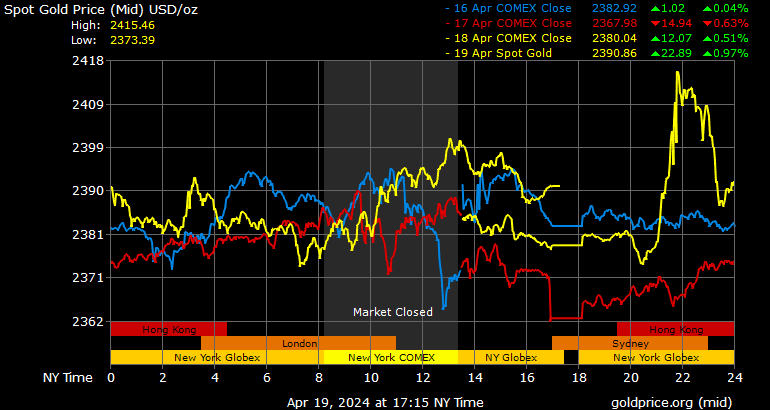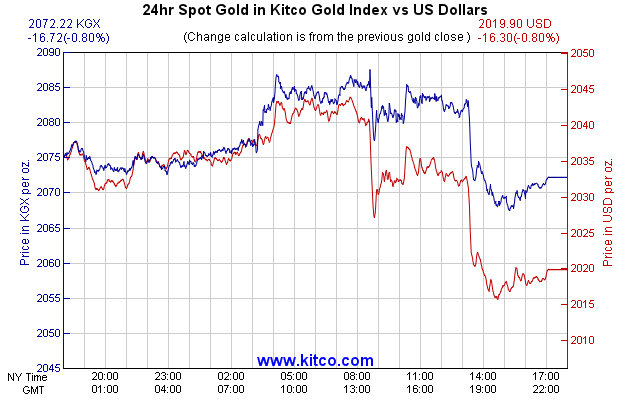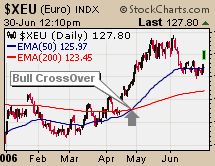Pivot-trading has been around a long time, and is a favorite technical analysis tool for many professional traders. Learning how to use pivot points helps take the emotion out of trading, and gives you discipline. Pivots are useful in not only helping you to determine price direction, but also as a money management tool. You can apply the concepts to virtually any market, but I think the pivot methodology works particularly well in stock indexes, particularly the S&P and E-mini S&P 500 index futures.
The E-mini S&P is priced right for smaller investors, the volume is superb, and fills are nearly instantaneous. And, CME Group’s Globex platform offers trading nearly around the clock. So I’m going to use this market in my examples of how to apply the pivot methodology to real market conditions. But first, some background to understand what pivots are, and how they can be used as part of technical analysis.
Pure market technicians believe all the factors related to supply and demand are reflected in a market’s price, and therefore they don’t concern themselves with fundamental analysis. Technical analysis is the study of price and price behavior using charts and various other tools to help determine market trends, and to predict where prices could be headed next.
Chart patterns can be ambiguous and subject to interpretation, but pivots are not. They are defined price points. They tell me that when the market moves above a determined number I should be bullish, and when it moves below another determined number I should be bearish. And, if I’m already long (or short) because the market moved above (or below) one of my pivots, they can help me determine where to place my stops and exit my trades. Pivots also take volatility into account to show momentum.
Calculating Pivots
The traditional formula for calculating pivot points incorporates three data points: the previous day’s high, low and close. You can use other datasets and/or time frames to find what gives you a unique edge. Some traders like to use the open in their calculation. I like to calculate both weekly and daily pivot numbers, which can be used for swing trading or day trading. No matter which numbers you use, the value of using pivots is to tell you whether the market is pivoting to a higher-level value, or to a lower-level value. Pivot points also take volatility into account to show momentum. Do they always work perfectly? No. But will they give you guidance? Absolutely.
To calculate basic daily pivot points, you will add the high, low and close of the previous trading day, and divide by three. You want to do this before the market opens for the session you wish to trade, so you will have your levels and be ready. The first support (S1) is two times the pivot minus the high, while first resistance is two times the pivot minus the low. To find second support, take the difference between the high and low, then subtract that number from the pivot. Second resistance is the difference between the high and the low, added to the pivot.
Pivot Point = (H + L + C) / 3
1st Support = (2 x Pivot) - H
1st Resistance = (2 x Pivot) - L
2nd Support = Pivot – (H – L)
2nd Resistance= Pivot + (H – L)
As mentioned, there are also other variations of this basic analysis. Some traders will incorporate the opening of the next day, adding to the high, low and close of the prior day, and then dividing by four. Some traders believe the opening is more important than the prior day’s close, so they use the high and low of the prior day, and the new opening the next day divided by three. These traders probably wouldn’t trade during the first few minutes of the session as they calculate their pivots based on the current day’s open.
You might be asking yourself, which session do you I use in my calculations? Do you use the overnight session, or day session, or both combined? It’s really up to you to find a method that might give you an edge. I prefer the classic calculation using the regular day session, and use the opening range (roughly first hour of trade) as a separate pivot point by itself, as a breakout level.
Support and Resistance
There are two ways of using pivots. The core technique is based on support and resistance. We can use other technical indicators, such as moving averages, to support this analysis and help provide confirmation. The idea is to sell when prices violate support levels in a break and buy when prices push through resistance on the upside.
Support and resistance are key points to watch in chart patterns. Support occurs when increased demand for a particular futures market builds a floor under that market’s price. A support level or zone appears when buyers miss purchasing a futures contract and vow to buy it later should prices decline to the same, or nearly the same, level. Resistance occurs when selling pressure stops a market’s price rise. A resistance level is similar to a support level in that traders who buy the futures con¬tract just before it tumbles vow to sell if its price rallies back to their purchase price. In bull markets, old resistance often becomes future support and in bear markets, old support becomes new resistance.
Finding first and second resistance (R1 and R2) and first and second support (S1 and S2) can help you predict how far prices might climb and how far they might fall. These levels can also provide key stop-loss levels, a vital risk-management tool.
Look at support and resistance as floors and ceilings of a building. If you can break through the floor of the second story, you’ll fall through the ceiling of the first story, and probably land on the floor, now one story lower. Resistance numbers are always higher than your pivot, and your pivot is always higher than your support numbers. You can use these numbers without ever even looking at a chart.
Trading the Pivot
Pivot points can also be considered critical junctures in markets. If the market is flip-flopping around a pivot number, the market is trying to decide if that pivot is valid, and to what extent. The fact that so many traders watch these pivot numbers means they can be a self-fulfilling prophesy. If everyone believes some certain number is support, and the market starts to rise, they will think, “I need to buy.”
More day traders use pivot trading than swing traders, but the approach can be used successfully for either trading time horizon. If daily and weekly pivot numbers line up, they have an even stronger impact. You could even take the last three daily or weekly pivots and divide by three to get an average pivot.
Let’s take a look at how we calculate and use pivots to trade the E-mini S&P. First, let’s consider the weekly pivots for the week of February 1 – 2, 2010. We are using data from the prior trading week to calculate our pivot, support and resistance points as follows.
S&P 500 Weekly Pivots, February 1 - 5
High 1,103.30 Low 1,066.70 Close 1,070.40
R1 = 1,093.57 R2 = 1,116.73
Weekly Pivot = 1,080.13
S1 = 1,056.97 S2 = 1,043.53
If the market moved under my weekly pivot that would be bearish, and if the market moved above it, that would be bullish on a weekly basis. Even if the market falls under our pivot at 1,080, if you are a longer-term trader you might want to wait to sell until if falls under our S1 of 1,056. Short-term traders who got long at 1,082 on Monday would’ve caught a nice move higher that day, which was extended with another bullish session on Tuesday.

S&P 500 Daily Pivots, February 1
High 1,093 Low 1,066.70 Close 1,070.40
R1 = 1,086.70 R2 = 1,103.00
Daily Pivot 1,076.70
S1 = 1,060.40 S2 = 1,050.40
When the market rallied above our pivot on February 1, you would have considered buying. S1 The high on Monday was 1,086, close to our R1 at 1,086.70, and also where the market closed. That would be a good place to consider taking profits.

Playing the pivots can help you uncover opportunities, but this technique will not always work perfectly every day or week. However, pivots can be effective money management tools in volatile sessions, as you use your support and resistance points as levels to get you out of the market as need be, before heavier losses mount. Remember, you don’t have to be right 100 percent of the time to be a successful trader. Use your pivots to employ proper money management, and to find trades with attractive risk-reward profiles. Never risk more than you can afford to lose, or hope to make!
I welcome you to give me a call to discuss this technique in further detail, or to answer any other questions you have about the markets.
Jeff Friedman is a Senior Market Strategist with Lind Plus. He can be reached at 866-231-7811 or via email at jfriedman@lind-waldock.com. You can follow Jeff on Twitter at www.twitter.com/LWJFriedman. Join Jeff for his monthly webinar, Friedman’s Futures Forecast, by visiting Lind-Waldock’s events page. You can view an archived webinar of this forecast at www.lind-waldock.com/events, where Jeff covers even more detail.
---------------
Paksu : Here are resistance, pivot dan support on 5 Feb 2010 from Hafeez Blog
Resistance 3: 1130.80
Resistance 2: 1111.05
Resistance 1: 1098.85
Pivot : 1079.00
Support 1: 1059.35
Support 2: 1047.15
Support 3: 1027.45



















No comments:
Post a Comment